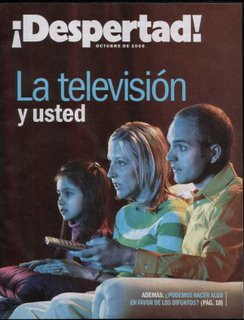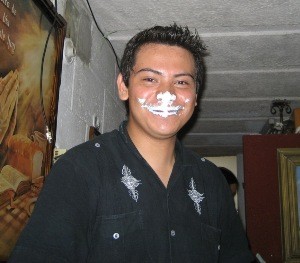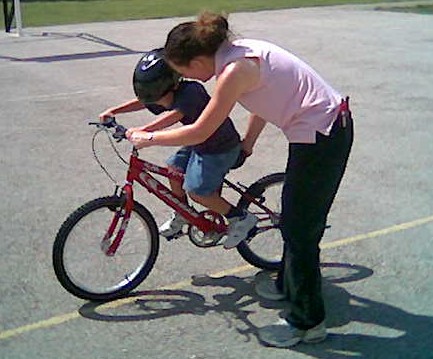 We got a chance to take the kids out to help them learn to ride their bikes this Saturday. One of the drawbacks of being a missionary kid is the lack of a constant environment and routine in which one can learn basic kid things like riding a bicycle. Well, Rebekah is now 7, and we decided that it was time that she learned this basic skill. Of course, her brothers wouldn’t be left out.
We got a chance to take the kids out to help them learn to ride their bikes this Saturday. One of the drawbacks of being a missionary kid is the lack of a constant environment and routine in which one can learn basic kid things like riding a bicycle. Well, Rebekah is now 7, and we decided that it was time that she learned this basic skill. Of course, her brothers wouldn’t be left out.
So we took Rebekah, Joseph, and Jonathan to the park, along with their bicycles. We had practiced a few times before, but for Bekah and Joseph, this was the day to go without the help of the training wheels. After about an hour, Bekah had it down and was running circles around us in the basketball court, while Joseph, although he had made significant strides, was sitting on the side with a broken pedal.
This got me to thinking about our methods of teaching as parents, and as missionaries. Here are some of my thoughts:
1. We have to establish a level of trust so that we can begin the training process:
Until we reach a certain level of intimacy, we may be able to give information, but training really isn’t possible. Kelly and I have a built-in relationship with our kids because we have lived with them for all of their lives, and we have been working with them in other areas as well. It is natural for us to be the ones to train them to ride their bikes. However, we have arrived with a cursory knowledge of the people and culture of Mexico, and we have to start from scratch in order to build relationships of trust so that we can begin the training process.
I have been given a great opportunity to develop these relationships in the Bible School. There I’m getting opportunities, not only to teach, but also to be with the students. It is through these times of being with them that they see who I am and what I have to offer as a missionary. This effort has paid off. We have had opportunities to preach and teach, and we are developing a seminar on leadership in order to address the needs of a student’s church. More opportunities to help are materializing as I continue to teach.
2. We need to teach so that people don’t expect failure, but at the same time are not afraid of it.
While working with Joseph, I realized that he would be riding very well, but with the slightest wobble, he was literally causing himself to fall. I needed to constantly remind him that he could do it, and although a fall or two was inevitable in the learning process, he could learn to keep his balance.
In teaching the class of hermeneutics, the students at first were almost deathly silent. Many of them were afraid of the ridicule of their fellow students. They were afraid of failure. However, as we established a safe place for them to do the work and a confidence within them that they could interpret the scripture, the class has become quite an animated place. What is more is that they are beginning to undertake the process on their own.
3. There will be hindrances.
Joseph had his pedal break as the result of a fall. Jonathan’s chain kept slipping after a previous bike-riding session. There are always unexpected items that we have to deal with. Still, a set of $3.80 pedals fixed Joseph’s problem, and a wheel adjustment Jonathan’s. Obstacles will come, but they don’t have to be insurmountable. What we need to do is find a way to get over them.
4. Success will come with time and patience.
Americans, myself included, think that we need to see results in the first week. Joseph was asking me to take his training wheels off on the first day. Still, the society that we are working in with its walled homes and busy work schedules doesn’t permit this to happen. Our persistent efforts to reach and teach will pay off, but they will take time. Sometimes it may feel like the training wheels are still on, but progress is being made.
One example is our neighbor, Marta. She works full-time in the house next-door, watching the children. Kelly, returning a ball to their home, provided an open door for her to ask about our work, and during a two-hour conversation about her life, she asked if we could take here to church this next Sunday. Marta is just one of the lives we can reach as we focus on living and modeling the basics of Christianity in our daily lives.
So continue to pray for us as we raise up disciples here in Mexico, and as we teach our kids to ride their bicycles!
 This Sunday evening, I had a chance to preach at Golgotha Assembly of God here in Merida. The church is only about 5 minutes away from our home, and is one of the few evangelical churches that is located near the growing northern section of the city. We have attended services at the church on other occasions, but this evening was special. This was the evening that the church welcomed us as one of their own.
This Sunday evening, I had a chance to preach at Golgotha Assembly of God here in Merida. The church is only about 5 minutes away from our home, and is one of the few evangelical churches that is located near the growing northern section of the city. We have attended services at the church on other occasions, but this evening was special. This was the evening that the church welcomed us as one of their own.
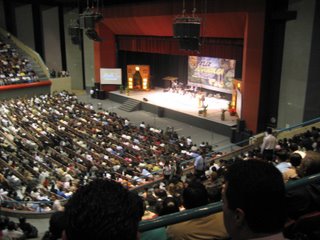

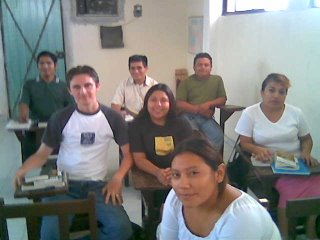
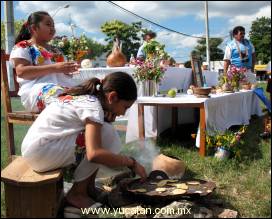

 We got a chance to take the kids out to help them learn to ride their bikes this Saturday. One of the drawbacks of being a missionary kid is the lack of a constant environment and routine in which one can learn basic kid things like riding a bicycle. Well, Rebekah is now 7, and we decided that it was time that she learned this basic skill. Of course, her brothers wouldn’t be left out.
We got a chance to take the kids out to help them learn to ride their bikes this Saturday. One of the drawbacks of being a missionary kid is the lack of a constant environment and routine in which one can learn basic kid things like riding a bicycle. Well, Rebekah is now 7, and we decided that it was time that she learned this basic skill. Of course, her brothers wouldn’t be left out.
